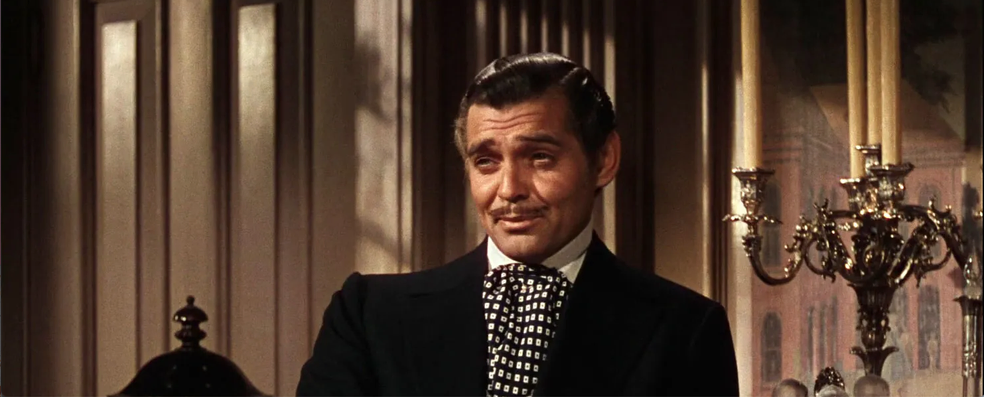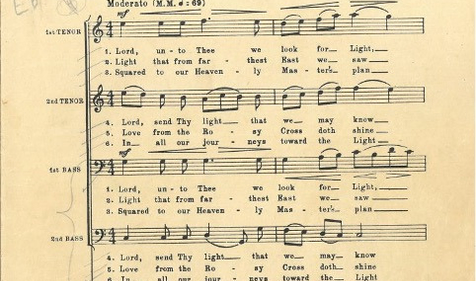Known as “The King of Hollywood,” Clark Gable was an American film actor and Freemason.
When Clark Gable’s life was cut short at the age of 59, he had already starred in more than 50 motion pictures. His career spanned an astonishing 37 years, most spent as a leading man in major films. As one of the most consistent box-office performers in Hollywood history, he fully earned his nickname: The King of Hollywood.

Clark Gable was best known for epitomizing masculinity and virility on the big screen. His long-time friend and periodic romantic interest Joan Crawford said of him, "He was a king wherever he went. He earned the title. He walked like one, he behaved like one, and he was the most masculine man that I have ever met in my life.”
Despite this moniker, Gable was more than just an actor. He was a patriot who served valiantly in World War II. In that spirit of serving others, it’s no surprise he also was a Freemason. Gable joined our fraternity right as his fame took off, and witnessed the 1° on September 19, 1933, the 2° on October 17, and was finally raised a Master Mason in Beverly Hills Lodge, No. 528, on October 31, 1933.
The King of Hollywood’s Humble Beginnings
William Clark Gable was born on February 1, 1901, in Cadiz, Ohio to William Henry "Will" Gable, an oil-well driller, and Adeline (née Hershelman). When Brother Gable was ten months old, his mother died, and, in April 1903, his father married Jennie Dunlap. Brother Gable’s stepmother had quite an influence on the boy and raised him to be well-dressed and well-groomed. She gave him piano lessons, igniting in him a love of music and performance. He came to love literature and was known to recite Shakespearean sonnets in the right company.
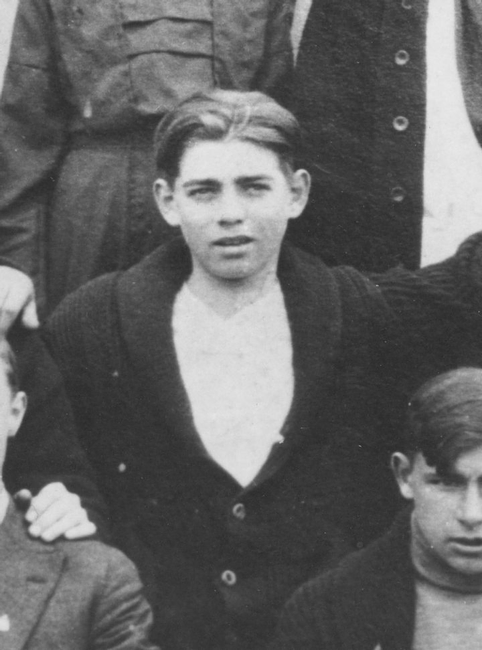
In addition to playing piano and brass instruments, Brother Gable loved to repair cars with his father. William Sr. encouraged him to engage in more “masculine” activities and taught him to hunt and the value of physical labor. When his father entered financial difficulties in 1917, Gable took a job with him working on a farm in Palmyra Township, near Akron, Ohio. When he was 16, he quit high school and the farm and left to work in Akron for the Firestone Tire and Rubber Company.
It was here that he saw the play The Bird of Paradise and decided it was his fate to become an actor. Over the next few years, Clark worked odd jobs throughout the Pacific Northwest, touring stock companies, working oil fields, and selling ties. He also took an unpaid job with a theater company to kickstart his acting career, but in 1919 he put his dream on hold after his stepmother died and he went to work alongside his father in the oilfields of Oklahoma.
From the Stage to Leading Man
Gable returned to the Pacific Northwest from Oklahoma and was accepted to join a theater troupe, The Astoria Players, despite his apparent lack of training. After the group went bankrupt, Clark moved to Portland Oregon, and began taking acting lessons at night while working his day job with Pacific Telephone.
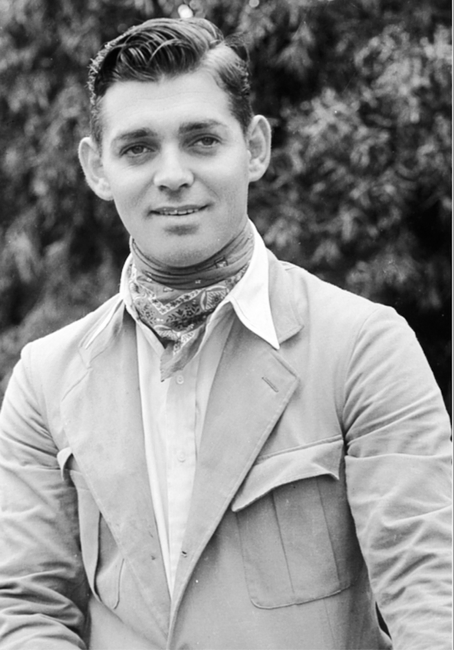
During this time, his acting coach, Josephine Dillon, set to work changing his image so he could better look the part of an actor. She paid to have his teeth fixed and his hair styled while providing him with nutrition advice. She taught him better body control and posture and helped him lower his naturally high-pitched voice. Gable learned to speak and carry himself more naturally and with greater confidence, setting him up for his future success as an actor.
Brother Gable’s Rise to Fame
On December 13, 1924, Clark Gable and Josephine Dillon married and the couple moved to Hollywood so that Clark could focus on his acting career. For the remainder of the 1920s, Clark struggled to break through and earn prominent roles. He worked on stage in Houston and New York City, and in silent films until 1930 when he secured his first big role in a Western. He played the villain in The Painted Desert, earning praise from viewers who began sending him fan mail.
Gable’s fame was on the rise and in April 1930, he and Josephine divorced. The next year, he married Maria Langham (a.k.a. Maria Franklin Gable), who was 17 years older than him. After Warn Bros. passed on signing him to a contract, Gable was signed by MGM's Irving Thalberg for $650 per week (equivalent to approximately $13,065 in 2023). He hired the well-connected Minna Wallis as his agent and never looked back.
MGM invested in building up his image and frequently paired him with well-established female stars such as Joan Crawford in Dance, Fools, Dance (1931). The studio recognized their chemistry and began pairing the two in more in films and handing Gable starring roles.
After his performance in A Free Soul, The Hollywood Reporter wrote "A star in the making has been made, one that, to our reckoning, will outdraw every other star ... Never have we seen audiences work themselves into such enthusiasm as when Clark Gable walks on the screen."

Over the next ten years, Clark came to dominate Tinsel Town. Notably, in 1934 he earned the Academy Award for Best Actor in It Happened One Night and starred in his most famous role in the Academy Award-winning best picture Gone with the Wind (1939). Clark delivered the last line in Gone with the Wind, "Frankly, my dear, I don't give a damn," which became one of the most famous lines in movie history.
Third Marriage and World War II Service
Brother Gable finshed the most successful decade of his life by marrying his third wife and the love of his life, actress Carole Lombard. It was said to be the happiest period of his personal life and the two were inseparable. Tragically, while Gable was filming Somewhere I’ll Find You with Lana Turner in 1942, Lombard died in a plane crash.
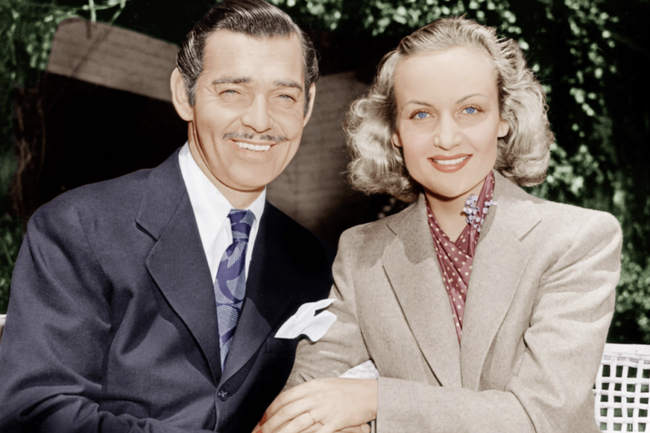
He was inconsolable. After he finished his film with Turney, Brother Gable enlisted in the United States Army under the Army Air Forces on August 12, 1942.
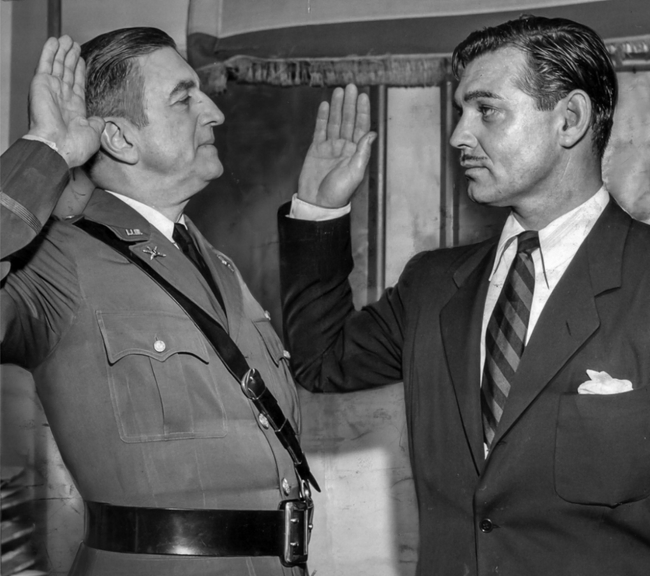
It had been Lombard’s initial suggestion that Clark enlist to support the war effort. Gable flew five combat missions, including one to Germany, as an observer-gunner in B-17 Flying Fortresses between May 4 and September 23, 1943, earning the Air Medal and the Distinguished Flying Cross for his efforts.

Return to the Screen
In June 1944, Brother Gable was promoted to major and although he intended to complete another combat assignment, he was placed on inactive duty. On June 12, 1944, Captain Ronald Reagan (the future U.S. president) signed Gable’s discharge papers. Gable helped finalize Combat America, a military propaganda film, in September 1944, and returned to the big screen in Adventure.
Brother Gable’s return to film thrilled the American people and he continued to make movies with MGM. His movies performed well at the box office, but they never recaptured their same quality. Despite the decline in his films, he became the highest-paid freelance actor of the day in 1954 when his contract with MGM expired.
Brother Gable continued to make movies every year, and he was so beloved by audiences that his movies continued to do well. Movie critics considered his final role to be one of the finest performances of his career. He starred in The Misfits alongside Marilyn Monroe but sadly, two days after they completed filming, Gable suffered a heart attack on November 6, 1960.
Death and Legacy
The King of Hollywood was sent to Hollywood Presbyterian Medical Center in Los Angeles for treatment. Initial newspaper reports stated that his condition was stable and improving, but on November 16, he died at the age of 59 from a second heart attack caused by an infection.
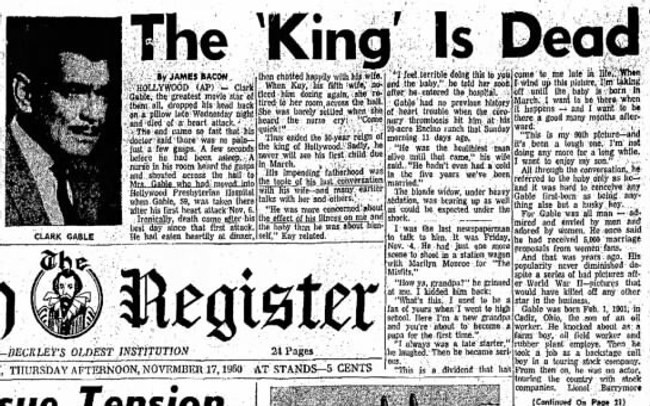
The next day newspapers throughout the country ran the same headline: “The King is Dead.” Brother Gable was laid to rest in the Great Mausoleum, Memorial Terrace, at Glendale's Forest Lawn Memorial Park next to his beloved Carole Lombard and her mother.
Despite his tragic passing at a young age, he had a remarkable career. He completed nearly 40 years as an actor, his calling from a young age. He became one the best-selling names in the history of Hollywood, appearing on Quigley Publishing's annual Top Ten Money Making Stars Poll sixteen times. The American Film Institute named Clark Gable the seventh greatest male movie star of classic American cinema.
Related Stories
Discover additional Scottish Rite blogs and news on this topic.
